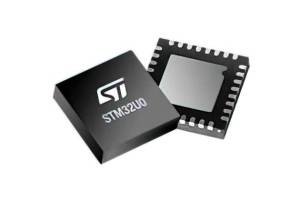The data released by China's National Bureau of Statistics shows that in the first two months of 2023, China's chip production decreased by 17% year-on-year, chip imports decreased by 26.5%, and exports declined by 20.9%. However, with the rising trend of domestication and the chip market's shift from oversupply to a more balanced supply-demand, China's chip production has been gradually increasing. Data from the Ministry of Industry and Information Technology shows that in the first five months of this year, China's chip production reached 140.1 billion units, a slight increase of 0.1% year-on-year.
Recently, the General Administration of Customs of China revealed the national import and export data of key commodities. From January to June this year, China's chip import volume and total import value both saw significant declines. Specifically, the import volume stood at 227.77 billion units, down 18.5% year-on-year, and the total import value amounted to $162.609 billion, down 22.4% from the previous year.
At the same time, in the first half of the year, China exported a total of 127.58 billion chips, a decrease of 10% year-on-year.
From the above, it's clear that while domestic chip production slightly increased year-on-year in the first half, both import and export volumes experienced significant reductions. On the whole, the results are mixed. It's evident that all segments of China's domestic chip industry chain need to continue their efforts to adeptly handle the negative impacts caused by various changes.
Development and Changes in the Chinese Chip Industry Chain
Let's delve into the segments of semiconductor equipment, chip design, and manufacturing to understand the recent advancements and products by local Chinese enterprises, along with their challenges and shortcomings, over the past six months.
Semiconductor Equipment
Based on the equipment purchasing data from local wafer fabs, as of June:
- The domestic rate of photoresist removal equipment reached over 90%, with Yitang Semiconductor being a leading supplier.
- Cleaning equipment had a 58% domestic rate, led by manufacturers such as Shengmei, North Microelectronics, and Zhichun Tech.
- Etching equipment was at 44%, with Zhongwei Company, North Microelectronics, and Yitang Semiconductor as notable suppliers.
- CMP equipment stood at 32%, with Huahai Qingke leading the way.
- Thermal treatment equipment and CVD equipment had a 25% and 29% domestic rate respectively, with major manufacturers including North Microelectronics, Yitang Semiconductor, and Tuo Jing Technology.
- PVD equipment's domestic rate was 10%.
- Coating and developing equipment were at 29%, led by Xin Yuan Micro.
- Ion implantation machines and measurement equipment had 7% and 4% domestic rates, with key manufacturers being Wanyi Enterprises (Kai Shitong) and Jing Ce Electronics, respectively. Furthermore, 28nm lithography equipment achieved a significant breakthrough.
Regarding equipment tenders, in June, a total of 21 pieces of equipment won bids, a YoY increase of 65.63%. From January to June, there were 254 wins, a YoY decrease of 37.90%. Overall, the localization rate of semiconductor equipment remains low. With a subdued chip market in the first half of the year and wafer fabs operating under capacity, there was reduced interest in purchasing equipment. It remains uncertain whether this trend will improve in the second half of the year.
Chip Design
While there's a gap between China and international levels in chip manufacturing, Chinese chip design capabilities are robust and evolving. The primary distinction lies in the dependence on EDA tools, IPs, and process technologies. Despite these challenges, local chip firms are progressing, with domestic buyers giving more orders to local designers.
Due to U.S. restrictions, importing high-end IPs to China has become difficult, highlighting domestic shortcomings. This has also ignited the development zeal of local semiconductor IP companies. For example, Xindong Tech and Niuxin Semiconductor are some companies advancing in high-speed SerDes interface IP, crucial for HPC applications. With the rise of Chiplet-based design, Xindong Tech and Xinyuan Microelectronics are also launching related products.
Chip Manufacturing
Chip manufacturing is a weak link in mainland China, particularly in advanced processes below 10nm. In this context, two significant advancements deserve attention: the localization of BAW filters and Huawei's anticipated launch of a locally produced 5G mobile processor.
Filters are vital in mobile RF front-end modules, primarily classified into Surface Acoustic Wave (SAW) and Bulk Acoustic Wave (BAW). BAW filters excel in high-frequency 5G filtering due to their superior properties. Broadcom currently dominates this market with an 87% share.
Against this backdrop, Saiwei Electronics achieved mass production of BAW filters. Partnered with Wuhan Minsheng, they synergized process and device design, producing with custom processes in Saiwei's wafer fabs. Reportedly, Saiwei's BAW filters will be used in a major domestic smartphone brand.
Furthermore, recent reports suggest that Huawei might release a new flagship smartphone by the year-end, powered by a domestically produced 5G mobile processor. After U.S. sanctions, Huawei faced challenges sourcing 5G processors from Qualcomm and couldn't procure advanced manufacturing capacity from TSMC and Samsung. However, Huawei's market share in mainland China has recently surged. If the rumors about Huawei's new processor are true, it would be a monumental breakthrough, challenging the U.S.'s restrictive policies.
The Path Forward for China's Semiconductor Industry
Since the outbreak of the "Semiconductor War" in 2019, the challenges faced by China's domestic semiconductor industry have become increasingly pronounced. This situation has brought heightened awareness and focus among the government and domestic industry players. While significant progress has been made over the past three years, fundamental issues remain to be addressed, requiring a unified effort across the entire value chain.
A key consideration is the development model and collaboration across different segments of the industry. How can we further enhance efficiency? The IDM (Integrated Device Manufacturer) model remains a viable strategy. Although the global semiconductor industry currently favors foundry outsourcing and major IDM players are leaning towards a "lightweight" approach to their own fabs, it might be premature for China to align completely with this global trend. Moreover, given the ongoing restrictions from the United States, a China-specific IDM — differing from Western IDM giants in possibly having an extended supply chain — can be more efficient.
Huawei's recent challenges in procuring advanced process capacities have been evident. In response, the company has invested heavily in integrating the domestic supply chain to increase efficiency, with the hope of manufacturing advanced-process chips domestically.
Another pivotal aspect is striking a balance between advanced and mature processes. For the foreseeable future, China's semiconductor production will primarily rely on mature processes.
In light of U.S. restrictions and combined efforts from Chinese enterprises and the government, China's proficiency and capacity in mature processes have consistently improved. By 2022, China held a 30% market share in global 50nm-180nm mature process capacities. Given the current trajectory and plans for new fabs, this share is projected to rise to 35% within the next five years.
China's expanding mature process capacity is becoming increasingly attractive to global electronic system and device manufacturers, especially for domestic sectors like electric vehicles, industrial robots, drones, IoT devices, and medical equipment. The cost-effectiveness of domestic mature process chips is evident. Concurrently, China's growing capacity and cost competitiveness are luring more overseas system and device manufacturers to source chips from the mainland.
Next, China should focus on the 20nm-45nm process range to capture a larger market share. Achieving this is not exceedingly challenging; with dedicated efforts from relevant enterprises and substantial government subsidies and support, China can replicate its success in the 50nm-180nm process range.
With the semiconductor market expected to remain stagnant throughout 2023, there will be much to refine and improve in China's domestic industry chain in anticipation of a resurgence in 2024, ensuring it can navigate global market challenges and trade tensions.





